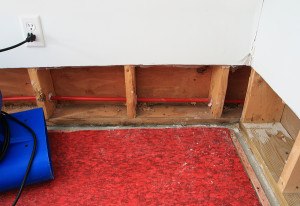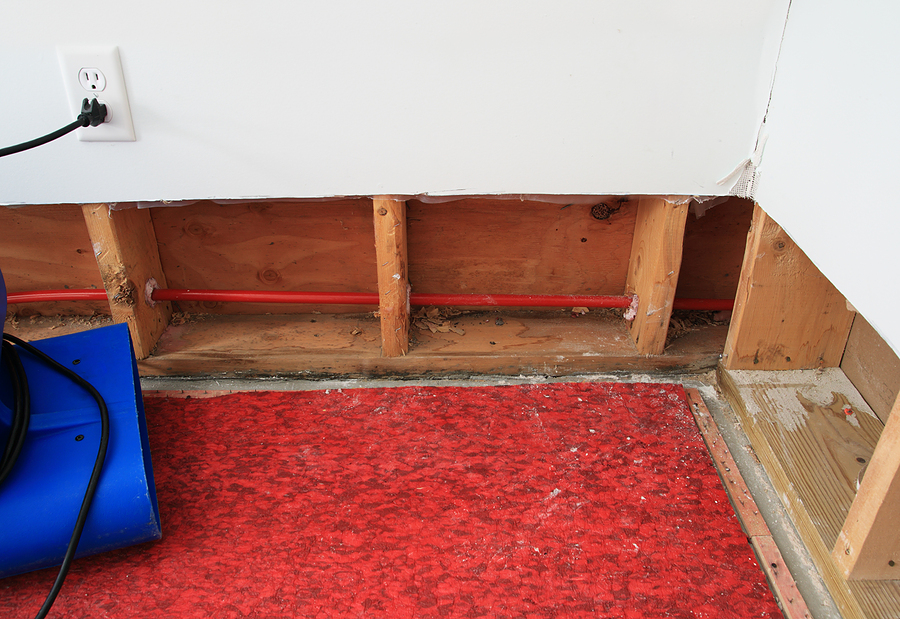The person who coined the phrase “saving for a rainy day” must have been a property owner with home drainage problems.
The financial costs of poor drainage can be substantial, and the human health costs significant too.
Prevention is important, and many clues exist for predicting trouble, says Ryan Larsen, a civil engineer with NDS Inc., a manufacturer of drainage products in Woodland Hills, California.
“Low spots in the landscape can be hard to see, but areas where the ground is wet for long periods of time after it rains or the sprinklers run are locations where water is collecting,” Larsen said.
Discoloration and mold growth on a home’s foundation, and places where stucco, siding or paint easily fall off a house are indications that water is pooling, he said. “You should suspect water is getting into your home if you detect damp or musty smells in your basement or crawl space,” he said.
Most homes have some kind of drainage problem, and most often the damage comes from rain gutters, Larsen said.
 “Because a lot of homes have gutter downspouts that lead straight to the ground, you’ve got all this water coming off the roof and pouring to just one point, where it can collect against a home’s foundation and flood landscapes and planter areas,” he said. “Fortunately, gutter problems are also the easiest to fix with a downspout extender.”
“Because a lot of homes have gutter downspouts that lead straight to the ground, you’ve got all this water coming off the roof and pouring to just one point, where it can collect against a home’s foundation and flood landscapes and planter areas,” he said. “Fortunately, gutter problems are also the easiest to fix with a downspout extender.”
The financial costs of poor drainage can add up. Outlays for drying basements can range from $1,000 to $10,000, according the U.S. National Flood Insurance Program. Repairing foundation damage can cost anywhere from $3,500 to $25,000, the National Association of Realtors says.
The human health costs of poor drainage on properties also can be sizeable, Larsen said.”`Poorly drained runoff from roofs can enter basements or flow inside homes through foundational cracks or leaks where it can warp floorboards and turn finished rooms into mildewy and moldy messes that can attract insects and rodents.”
Inadequate drainage also cracks foundations, creates standing water that ruins yards and gardens, and allows breeding spots for disease-carrying mosquitoes and heartworms.
“Soggy, poorly graded ground spells certain doom for lawns, shrubs, plants and gardens,” Larsen said.
Three of the most common solutions for drainage problems are catch basins, pop-up emitters and French drains.
Catch basins trap sediment and contaminants beneath downspouts for drainage to safer locations. Pop-up emitters are connected to underground drainage pipes and channeled away from structures. The pop-up tops allow water to drain when full but remain closed when empty to keep out rodents and debris. French drains are gravel-filled trenches that direct storm water away from specific areas. They collect water over their entire length, rather than from one particular spot.
With water drainage problems, though, come opportunities, said Monica Day, a water resources educator with Michigan State University Extension.
“Be creative,” Day said.”`There are positive ways of dealing with too much water. Keep it in the soil but where it’s not damaging anything. Let (ornamental) plants grow there to filter out the water and retain it.
“That provides beautification as well as practicality,” she said.
Was this article valuable?
Here are more articles you may enjoy.


 A True Alternative to Opioids for Workers’ Comp? Questions Remain
A True Alternative to Opioids for Workers’ Comp? Questions Remain  Trump Mounts Sweeping Attack on Pollution and Climate Rules
Trump Mounts Sweeping Attack on Pollution and Climate Rules  Ineos Recalls 7,000 SUVs After Doors Fly Open While Driving
Ineos Recalls 7,000 SUVs After Doors Fly Open While Driving  AAA Study Shows Consuming Cannabis and Driving The Same Day is Common
AAA Study Shows Consuming Cannabis and Driving The Same Day is Common 